ERA Test IVF – How It Works, Cost, Success Rate, and Alternatives
ERA test IVF is the latest development in assisted reproductive technologies. The ERA test is a molecular genetic study of the endometrium. It allows determining the best moment for transferring the embryo into the uterine cavity during the IVF program. ERA helps to find a so-called implantation window – the time when the endometrium has the most favorable conditions for implantation and an embryo can attach to the uterine mucosa, signifying the onset of pregnancy.
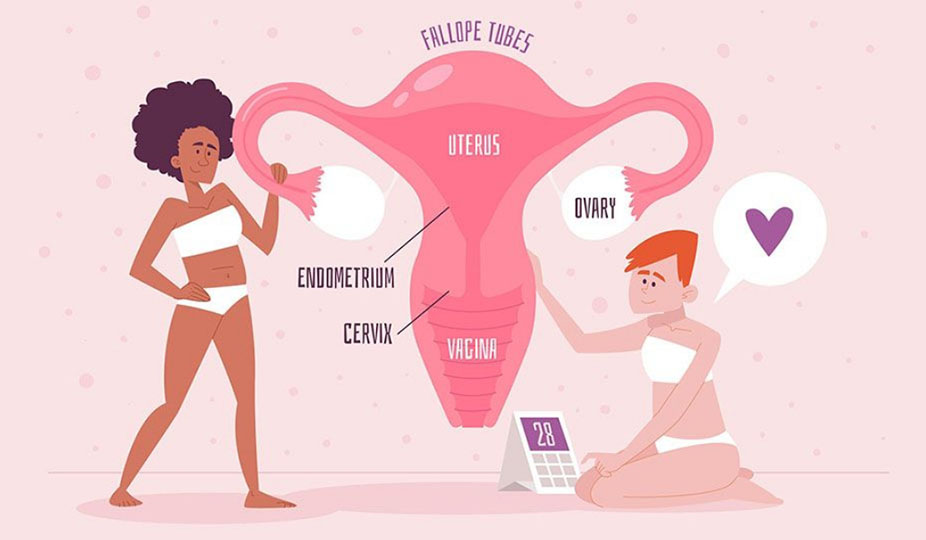
Endometrial Receptivity and Implantation Window
One of the main reasons for the low ART (assisted reproductive technology) program success rate is various chromosomal abnormalities in embryonic cells. Doctors can detect them during preimplantation genetic diagnostics. The transfer of genetically tested embryos significantly increases IVF programs’ effectiveness, especially in women of older reproductive age. However, in some cases, the transfer of genetically complete embryos does not lead to implantation and pregnancy.
Successful implantation depends not only on the embryo quality. Doctors should transfer them in time of the endometrium maturity and its best receptivity state. Uterine’s mucosa should be ready to accept the developing embryo as well. The time of maximum endometrium maturity is commonly called the implantation window. For most women, it is the 19-21 days of the menstrual cycle. However, in some cases, due to the female body’s natural characteristics or under the influence of hormonal stimulation, the implantation window may shift to an earlier or later date.
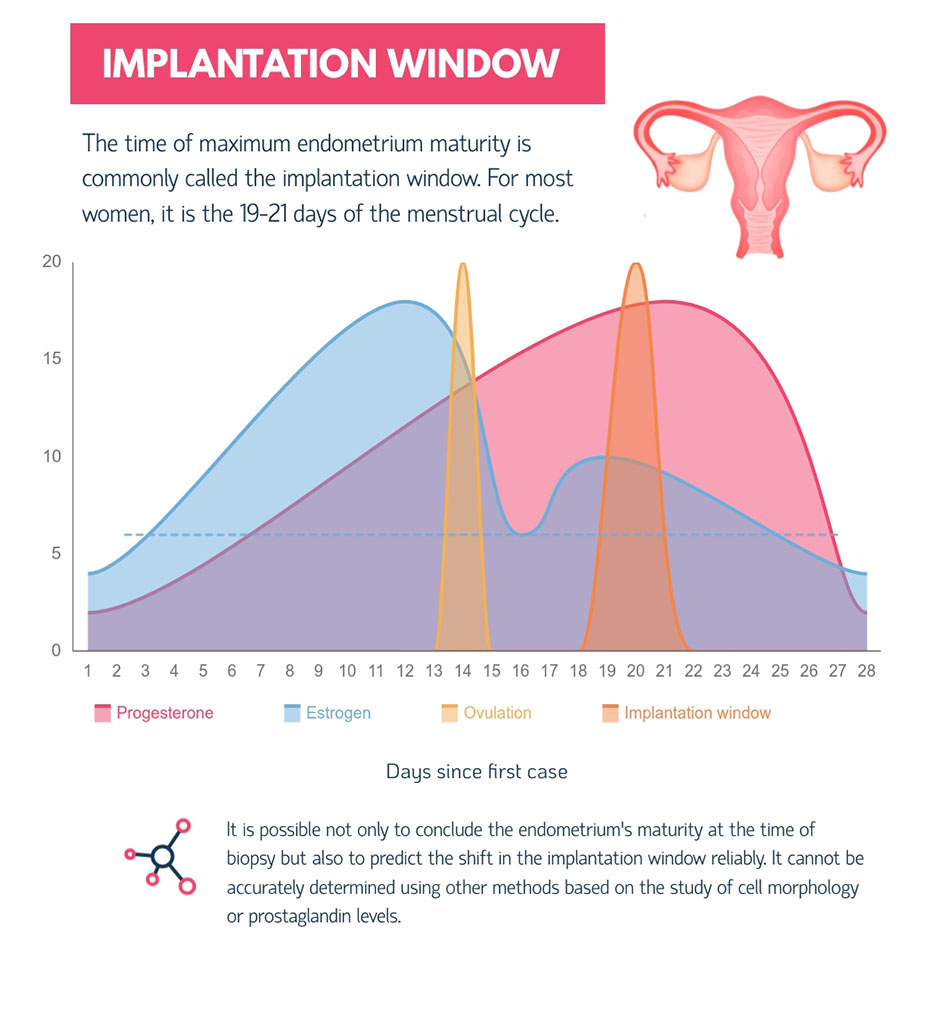
Endometrial immaturity is considered one of the main reasons affecting ART programs’ effectiveness, along with chromosomal abnormalities in embryonic cells. Studies show a shift in the implantation window period in approximately 25% of women who face unsuccessful embryo implantation during ART programs.
Thus, knowledge about the endometrium state and maturity is an important criterion when choosing the embryo transfer day. ART helps determine each woman’s perfect time for personalized embryo transfer (pET). If doctors diagnose a shifted implantation window, they can use embryo vitrification (cryopreservation) to synchronize embryo development and transfer time.
Endometrial Study
Given the high importance of determining the endometrial maturity state, there are various approaches and techniques.
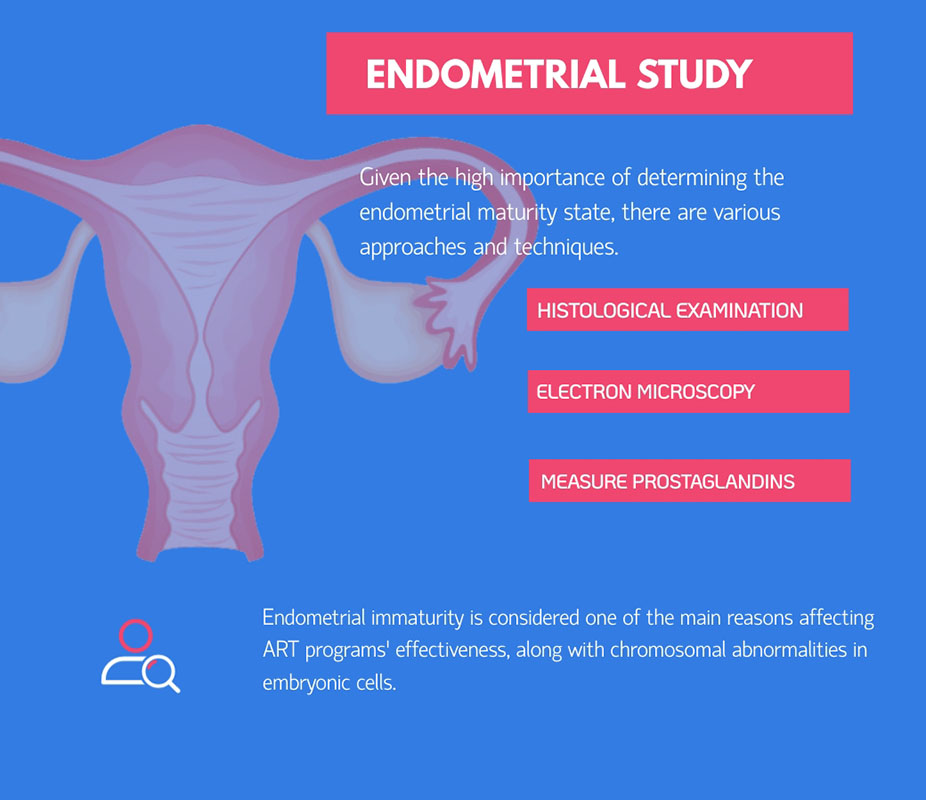
- For a long time, specialists considered a histological examination to be the best possible technique. They take endometrial tissue and define the endometrium state based on cell morphology, which changes through the menstrual cycle. However, numerous studies conducted in various clinics worldwide have shown low accuracy and low functional significance of this approach.
- One of the currently existing techniques studies the morphology of endometrial cells using electron microscopy. Special structures called pinopod appear on the cell surface during the period of maximum maturity. Electron microscopy can help to establish their presence.
- Another approach is to measure the amount of specific biological molecules, prostaglandins, in the endometrial fluid. The concentration of these substances sharply increases during the implantation window.
ERA Test IVF
The first and only molecular genetic approach for investigating endometrial maturity was introduced into clinical practice by the Spanish laboratory Igenomix, specializing in reproductive genetics research. They studied the activity level of 238 genes, which affect the level of endometrial receptivity.
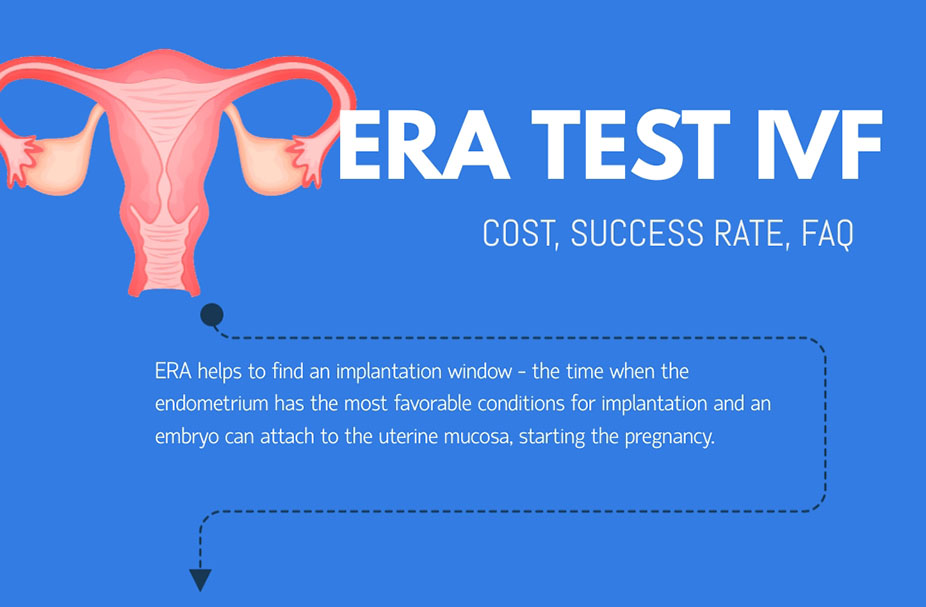
The analysis reflects the number of special molecules – RNA, each of which strictly corresponds to one of the genes under study. The shape of the graph changes depending on the state of maturity of the endometrium. Thus, according to the graph, it is possible not only to conclude the endometrium’s maturity at the time of biopsy but also to predict the shift in the implantation window reliably. It cannot be accurately determined using methods based on the study of cell morphology or prostaglandin levels, which makes ERA unique and perfect for IVF.
The accuracy and high clinical performance of the ERA test IVF rely on statistical data obtained from the analysis of a large sample of endometrial samples during the test design phase. Every year, Igenomix conducts thousands of investigations, which confirm the data processing algorithm’s accuracy and reliability. It is the unique method of evaluation that makes the ERA test the only study of its kind.
Endometrial Study
To perform the test, doctors take a biopsy of an endometrial tissue sample on a specific day of the cycle. Further analysis is based on next-generation sequencing (NGS). The transition to NGS technology made it possible to diagnose the state of the endometrium even more accurately.
Based on the ERA test, one of the following results is received.
- The endometrium is receptive. It means that doctors can perform embryo transfer, and the program is highly likely to end with pregnancy.
- The endometrium is not receptive. It means a shift of the implantation window. The doctor also receives information about where and for how many days it is shifted. Consequently, they can determine the optimal date for the next endometrial biopsy.
Together with the analysis of endometrial receptivity, one can examine the microflora in the uterine cavity. It helps exclude pathological seeding of the uterus by aggressive flora that prevents the normal development of pregnancy and controls the correct amount of normal microflora in the uterine cavity. This examination will help prepare for pregnancy, increase the chance of successful implantation and reduce the risk of miscarriages of infectious genesis.
Why Is ERA Test Important for IVF?
The implantation window test saves embryos and increases the likelihood of pregnancy. It is recommended primarily for women with repeated failed IVF attempts, but women can use it even on the first IVF program.
The ERA test has been proven effective. You can check the advantages of the endometrial receptivity test in a short table below table.
The implantation window test saves embryos and increases the likelihood of pregnancy. It is recommended primarily for women with repeated failed IVF attempts, but women can use it even on the first IVF program.
The ERA test has been proven effective. You can check the advantages of the endometrial receptivity test in a short table below.
| IVF without ERA test | ERA test IVF | |
|---|---|---|
| A correct determination of the implantation window | In 70% of cases | In 100% of cases |
| Chance of giving birth within 12 months | 55% | 71% |
| Probability of giving birth after one frozen embryo transfer | 42.4% | 56.2% |
Although the ERA test increases the IVF cost, this study helps many couples save on fertility treatment. Defining the implantation window increases the chance of pregnancy with a single embryo transfer. It means that you will need fewer IVF attempts to overcome infertility.
Who Needs ERA Test IVF
Checking endometrial receptivity during IVF is highly important. Specialists determine the implantation window via ERA testing in the following cases.
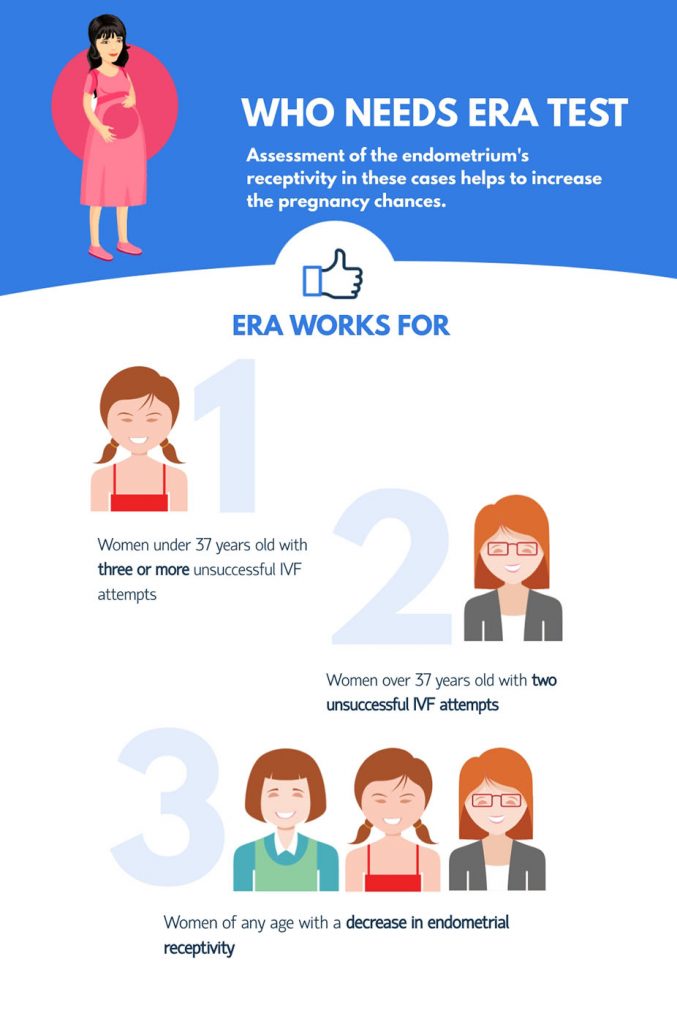
- Women under 37 years old with three or more unsuccessful IVF attempts should make ERA test IVF. Doctors use ERA if there are morphologically complete embryos and a woman no visible pathology of the uterus and endometrium. The thickness of the endometrium should be at least 6 mm.
- Women over 37 years old with two unsuccessful IVF attempts. Every fourth of these patients has a shifted implantation window.
- Doctors use ERA test IVF in case of infertility of unknown origin.
- Women of any age with a decrease in endometrial receptivity should use ERA.
- Doctors recommend making ERA tests for donor IVF rounds.
Assessment of the endometrium’s receptivity in these cases helps to increase the pregnancy chances. Moreover, it helps to adjust the related infertility treatment tactics, if necessary.
When Is ERA Test Performed?
- When using hormone replacement therapy (taking estrogen and progestogen preparations under the control of endometrial growth), a biopsy is taken exactly 120 hours after the start of progesterone intake.
- A biopsy is taken seven days after the recorded peak LH in the natural cycle (under the control of endometrial growth and the natural peak of LH hormone).
- A biopsy is taken seven days after the hCG injection in a natural cycle with an additional injection of hCG to trigger ovulation.
Progressive ERA Test Questions and Answers
The accuracy of ERA testing is 90-99.7%. It is very sensitive and can increase IVF pregnancy chances to 71%.
An ERA is an advanced fertility test. All clinics we work with have the necessary facilities for running the test. Inform your Sunshine specialist that you would like to know more about ERA opportunities, and we will give you more details on its price and the best specialist in your country and abroad.
Patients easily tolerate the biomaterial sampling procedure. It can cause slight painful pulling, like during menstruation.
Endometrial biopsy costs around $800-1000. A complete ERA package, including endometrial receptivity test, appointments, and medication, costs $1000-1600. Contact us to get a full price list.